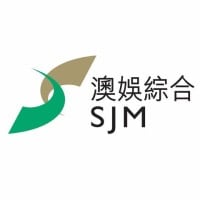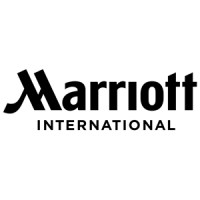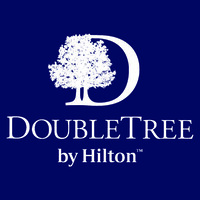
SJM Resorts Company Cyber Security Posture
sjmjob.comSJM Resorts, S.A. ("SJM") is one of the six concessionaires in Macau, authorised by the Government of the Macau Special Administrative Region to operate casinos and gaming areas. SJM is also the only casino gaming concessionaire with its roots in Macau. SJM owns and operates the Grand Lisboa Palace Resort, the Grand Lisboa hotel and casino, as well as other casinos located in prime locations in Macau. The Company's operations cater to a wide spectrum of patrons, with casino gaming, leisure entertainment and hospitality services including fine and casual dining and luxury accommodation. The Grand Lisboa Palace, SJM's integrated resort on Cotai, opened its doors to the public on 30 July 2021. In the initial phase opening, the resort offers luxury hotel rooms and suites, fine and casual dining, gaming, shopping, wellness and spa facilities and events spaces. THE KARL LAGERFELD hotel tower was added to the resort's diversified offerings on 3 December 2021. Additional features to be inaugurated include the hotel tower Palazzo Versace Macau, as well as more facilities for meetings and conferences, shopping and dining.
SJM Resorts Company Details
sjm-holdings
10,001+ employees
7920
721
Hospitality
sjmjob.com
Scan still pending
SJM_1153223
In-progress
Between 900 and 1000
This score is AI-generated and less favored by cyber insurers, who prefer the TPRM score.
 SJM Resorts Global Score
SJM Resorts Global Score.png)

SJM Resorts Company Scoring based on AI Models
| Model Name | Date | Description | Current Score Difference | Score |
|---|---|---|---|---|
| AVERAGE-Industry | 03-12-2025 | This score represents the average cybersecurity rating of companies already scanned within the same industry. It provides a benchmark to compare an individual company's security posture against its industry peers. | N/A | Between 900 and 1000 |
SJM Resorts Company Cyber Security News & History
| Entity | Type | Severity | Impact | Seen | Url ID | Details | View |
|---|
SJM Resorts Company Subsidiaries

SJM Resorts, S.A. ("SJM") is one of the six concessionaires in Macau, authorised by the Government of the Macau Special Administrative Region to operate casinos and gaming areas. SJM is also the only casino gaming concessionaire with its roots in Macau. SJM owns and operates the Grand Lisboa Palace Resort, the Grand Lisboa hotel and casino, as well as other casinos located in prime locations in Macau. The Company's operations cater to a wide spectrum of patrons, with casino gaming, leisure entertainment and hospitality services including fine and casual dining and luxury accommodation. The Grand Lisboa Palace, SJM's integrated resort on Cotai, opened its doors to the public on 30 July 2021. In the initial phase opening, the resort offers luxury hotel rooms and suites, fine and casual dining, gaming, shopping, wellness and spa facilities and events spaces. THE KARL LAGERFELD hotel tower was added to the resort's diversified offerings on 3 December 2021. Additional features to be inaugurated include the hotel tower Palazzo Versace Macau, as well as more facilities for meetings and conferences, shopping and dining.
Access Data Using Our API

Get company history
.png)
SJM Resorts Cyber Security News
SJM Resorts hosts 2025 Cyber Security workshop & Business Matching for MSMEs
SJM Resorts (SJM), in collaboration with The Federal General Commercial Association of Macau Small and Medium Enterprises, hosted the 'SJM ...
Macau Casinos Review Cybersecurity Systems Following Attacks on US Operators
Macau casinos have undergone intensive reviews of their cybersecurity systems following recent attacks on US operators.

SJM Resorts Similar Companies

Playa Hotels & Resorts
Playa Hotels & Resorts N.V. (NASDAQ: PLYA, "Playa") is a leading owner, operator and developer of all-inclusive resorts in prime beachfront locations in Mexico, Jamaica and the Dominican Republic. Playa currently owns and/or manages a total portfolio consisting of 20+ resorts under the following bra

Caesars Entertainment
Caesars Entertainment, Inc. is the largest casino-entertainment Company in the U.S. and one of the world's most diversified casino-entertainment providers. Since its beginning in Reno, NV, in 1937, Caesars Entertainment, Inc. has grown through development of new resorts, expansions and acquisitions.

Marriott International
Marriott International, Inc. is based in Bethesda, Maryland, USA, and encompasses a portfolio of approximately 9,000 properties across more than 30 leading brands in 141 countries and territories. Its heritage can be traced to a root beer stand opened in Washington, D.C., in 1927 by J. Willard and

Radisson Blu
Welcome to the official page for Radisson Blu, a brand of Radisson Hotel Group. Stylish living spaces for business and leisure in some of the world’s favorite destinations. Choose stylish and elegant hotels that are created with you in mind. Enjoy a warm welcome with our inviting ambience and though

DoubleTree by Hilton
DoubleTree by Hilton hotels are distinctively designed properties that provide true comfort to today’s business and leisure travelers. From the millions of delighted hotel guests who are welcomed with the brand’s legendary, warm chocolate chip cookies at check-in to the advantages of the award-winni

Fairmont Hotels & Resorts
Located in the heart of each destination we call home, a stay at any Fairmont hotel is truly unforgettable. Known for grand and awe-inspiring properties and thoughtful and engaging colleagues who aim to make each and every stay a cherished and memorable experience, we have been the stage for some of

Frequently Asked Questions
Explore insights on cybersecurity incidents, risk posture, and Rankiteo's assessments.
SJM Resorts CyberSecurity History Information
How many cyber incidents has SJM Resorts faced?
Total Incidents: According to Rankiteo, SJM Resorts has faced 0 incidents in the past.
What types of cybersecurity incidents have occurred at SJM Resorts?
Incident Types: The types of cybersecurity incidents that have occurred include .
Incident Details
What are the most common types of attacks the company has faced?
Additional Questions
What Do We Measure?
















Every week, Rankiteo analyzes billions of signals to give organizations a sharper, faster view of emerging risks. With deeper, more actionable intelligence at their fingertips, security teams can outpace threat actors, respond instantly to Zero-Day attacks, and dramatically shrink their risk exposure window.
These are some of the factors we use to calculate the overall score:
Identify exposed access points, detect misconfigured SSL certificates, and uncover vulnerabilities across the network infrastructure.
Gain visibility into the software components used within an organization to detect vulnerabilities, manage risk, and ensure supply chain security.
Monitor and manage all IT assets and their configurations to ensure accurate, real-time visibility across the company's technology environment.
Leverage real-time insights on active threats, malware campaigns, and emerging vulnerabilities to proactively defend against evolving cyberattacks.




